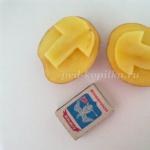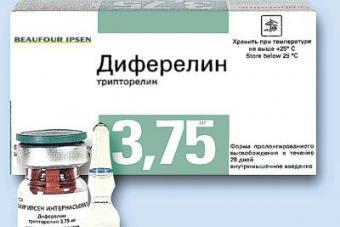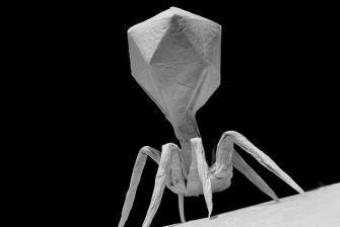They can occur under various circumstances and in various situations. For all dog injuries during hunting, training or a normal walk, before taking the pet to the veterinary clinic, the owner must be able to properly treat all possible wounds in the dog so that the animal does not bleed to death on the way to the hospital.
In this article, we will look at the types of wounds in dogs, as well as how they are treated and treated.
Treatment
Rinse the dog's wound with hydrogen peroxide, a solution of furacilin or rivanol, lubricate with iodine (you can use brilliant green) and bandage it. In the field, when there are no medicines available, you should wash the wound with drinking water, attach a plantain leaf, white pulp of a puffball mushroom, in extreme cases, you can use the liquid produced by your body.
In no case should you let the dog lick the wound with his tongue, but not because it is harmful: on the contrary, the dog's saliva contains a substance that can kill bacteria; but the dog can damage the skin around the wound with his tongue, and besides, lick all the necessary medicines from the surface of the wound.
The best way to heal a wound in a dog is the usual brilliant green, which disinfects the wound and dries it. Usually you can use brilliant green 1-2 times a day.
The dog's laceration is extensive and deep, but practically uncontaminated.
Treatment
Lubricate the hair around the wound with iodine, alcohol, vodka, refined gasoline. After that, cut off the hair, making sure that they do not get into the wound, apply a sterile bandage. Having provided first aid, the dog must be delivered no later than 6-12 hours from the moment of injury to the doctor to provide qualified surgical care.
The laceration is extensive and deep, heavily contaminated
Treatment
Rinse the dog's wound with hydrogen peroxide, a solution of potassium permanganate (pale pink), a solution of furacilin, rivanol or clean boiled water (cold). Treat the edges of the wound with iodine (brilliant green), apply a sterile bandage.
Then, no later than 6-12 hours after the wound was received, the dog must be taken to the doctor to provide qualified surgical care.
Penetrating wound of the chest
Symptoms are exhalation of air with each inhalation and exhalation with a characteristic wheezing sound and bloody foam, which is then sucked back through the opening of the wound. Usually the death of a dog occurs as a result of suffocation. Under no circumstances should this be allowed.
Therefore, it is necessary to act quickly and skillfully.
Treatment
First, it is necessary to stop the access of air to the chest cavity as soon as possible; secondly, treat the edges of the wound in the dog with iodine; thirdly, lubricate the skin and wool in a circle at a distance of 5-6 centimeters from the edge of the wound with petroleum jelly; fourthly, attach a piece of a plastic bag, film, wax paper and then, applying cotton wool on top, bandage it tightly.
You can also suggest another way: moisten a clean gauze napkin, a bandage, a clean rag abundantly in a disinfectant solution or in a solution of iodine with water, then make a gag and close the wound with it, but so that it does not penetrate into the chest cavity and does not infect with the edges of the wound. Then polyethylene is applied and tightly bandaged.
The first way is simpler and more reliable. Having provided first aid, the dog should be taken to the veterinarian, and no later than 6-8 hours after being injured, because penetrating wounds of the chest in a dog are dangerous for their consequences and fraught with complications. In such cases, surgical intervention is necessary.
Abdominal injury
These are very serious wounds in dogs. With such wounds, prolapse of the intestines quite often occurs. If the intestines are not damaged, then the dog can be saved!
Treatment
The fallen intestines must be thoroughly washed with a 0.1% solution of rivanol, furacilin or simply boiled water. Then gently place the intestines in the abdominal cavity and be sure to apply a bandage. Insert the intestines very carefully so that they take their usual position.
Wrap the intestines in a clean cloth (sheet, towel, pillowcase, medical gauze), which must first be moistened with a solution of furacilin, rivanol, baking soda (2 tablespoons per 0.5 liters of boiled water with the addition of 10-20 drops of iodine), just boiled water so as not to allow drying out. Treat well with synthomycin liniment. Deliver to the doctor no later than 4-6 hours after the injury.
Absolutely no dog to drink! If the dog's intestines or stomach are torn with such injuries, there is practically no chance for the dog to survive. Bandaging methods are very diverse. Without the appropriate experience and skill, doing this work can sometimes be very difficult. Elastic bandage, mesh bandage, adhesive plaster, medical glue should be widely used.


Akan has such a beautiful dog 🙂
Hello friends, I recently received a letter from my regular viewer and reader, his name is Akan. He asked me to tell you how to treat a wound to a dog, the nearest veterinarian is more than 160 km away, so he cannot show the dog to the doctor.
Of course, you should not self-medicate, if you have the opportunity to deliver the animal to the clinic, then it is better to do it, but there are hopeless situations when you have to act on your own.
In this article I will try to tell you how you can treat a wound in a dog so as not to harm at least, to help as much as possible.
So, a large alabai attacked the dog Akan and made several wounds on the head, the wounds festered. These photos clearly show the damage.

Wounds on the head after bites
Wound treatment
In such cases, you need to cut the hair around the bites, especially if it is thick and long. If this is not done, then the discharge from the wound will collect in large icicles, and dermatitis will appear on the skin under them, which will add problems.

Trimming the fur around the wound
The wound should then be washed with 3% hydrogen peroxide. To do this, it is more convenient to use a regular disposable syringe without a needle, which must be inserted into the wound and washed out with pus.
Be prepared for the fact that a lot of foam is formed and the dog may be hurt. But such an unpleasant procedure must be done. Peroxide removes pus well and does not act too aggressively on living tissues.
Remove everything that was washed from the wound with clean gauze, the edges of the wound can be slightly squeezed for better cleansing.

Syringe with plunger removed
After that, enter Levomekol ointment into the wound, again using a syringe without a needle. To quickly and conveniently draw the ointment into the syringe, you need to remove the piston, squeeze out Levomekol into the syringe and return the piston to its place.
How often should a wound be treated? Start with twice a day and then work your way up. If the discharge becomes less, then it will be possible to rinse with peroxide once a day, and administer the ointment twice - in the morning and in the evening.
What Not to Do
It is impossible to fill the wound with alcohol, vodka, brilliant green, iodine and other substances containing alcohol. I know from experience that many people use alcohol to disinfect a wound, but such treatment will not kill all microbes, but there will be tissue burns. As a result, healing will slow down and you will get a big scar.
It is impossible to sew up a purulent wound tightly, the pus must go out somewhere and it will find its own way in any case. If the injury occurred a long time ago, then without preliminary surgical treatment it is generally better not to sew.
You do not need to let the dog lick the wound, especially if she has, which is common. Indeed, many people use a similar method of treatment - let the dog lick an ulcer or cut, but this method is not always safe.
Danger signs
Be sure to monitor the general condition of the dog during treatment. If you notice that there is thirst, depression, convulsions, involuntary twitching of the limbs, then in any case you need to get to the doctor. Or, at your own risk, prescribe broad-spectrum antibiotics.
Also dangerous signs: the appearance of a putrid odor, severe swelling around the wound.
It is important to remember that when bitten, a dog can become infected with a virus, which is also dangerous for your life. Therefore, if your dog is not vaccinated, it must be vaccinated within 36 hours after the bite, no later.
Conclusion
Friends, it is clear that I described the general principles of how to treat a wound to a dog and in each case there may be some nuances. For example, if there is bleeding, then the first step is to eliminate it. If the wound is not deep, then you can trim the hair around and get by with powder with idoform, or its analogue.
In more severe cases, it is necessary to surgically expand the wound, remove pockets, apply novocaine blockades, install drainage, but without experience, such treatment methods are dangerous, so I did not mention them.
(adsbygoogle = window.adsbygoogle || ).push(());
Content:
In veterinary practice, stab, cut, purulent wounds are diagnosed in dogs and other pets. They are characterized by a violation of the integrity of the skin, mucous membranes, tissues of internal organs, the development of inflammatory processes in various structures of the dermis. Such injuries occur as a result of mechanical damage (impacts, cuts), thermal, chemical effects, bites from relatives and other animals. Surgical wounds occur after abdominal operations, surgical intervention.
festering wounds
All wounds, except for operating ones, are infected. That is, pathogenic flora penetrates into the damage zone. For example, bite wounds are almost always contaminated with pathogenic agents. Microorganisms under favorable conditions actively, rapidly multiply, provoking acute inflammation.
As a rule, the appearance of purulent wounds in dogs is promoted by: Klebsiella, Pseudomonas aeruginosa, Escherichia coli, strepto-staphylococci. In the course of their life activity, bacteria produce endotoxins, which not only destroy tissues, provoke inflammatory processes in the deep structures of the dermis, but also poison the entire body of a pet.
Wounds can be superficial, deep, penetrating. After injury, the so-called wound process is activated, which takes place in three phases:
- inflammation;
- regeneration;
- scar formation, epithelialization.
Minor abrasions, small wounds dogs lick on their own. The bactericidal enzymes contained in the saliva of pets contribute to the acceleration of regeneration. Purulent wounds require a longer complex treatment, a competent approach.
Important! You can provide first aid to your dog at home. Further therapy should be prescribed by a veterinarian. In order not to aggravate the situation, you should not self-medicate. Antibacterial drugs should be selected by the attending veterinarian, based on the results of diagnostics, test microbiological studies.
In traditional veterinary medicine, symptomatic treatment and antibiotic therapy are prescribed to accelerate the healing of purulent infected wounds in dogs. Antibacterial ointments and gels are used for topical treatment. creams, liniments. Additionally, pharmacological preparations in tablets, antibiotics of a complex, broad spectrum of action can be prescribed.
First aid
Faced with a similar situation before the arrival of the veterinarian, a trip with a pet to the veterinary clinic, it is very important to prevent infection, to prevent the development of the inflammatory process. If the damage is quite extensive and contaminated, first of all, wash the lesion with plenty of warm water and laundry soap.
At the next stage, with sterile tweezers, try to remove third-party particles that have entered the wound. Carefully trim the hair around the affected area with sterile scissors. Treat the skin around the purulent wound with brilliant green, alcohol tincture of iodine, using disposable gauze-cotton pads. Make a short novocaine-antibiotic block. It may be necessary to partially excise dead tissue, followed by drainage of the wound. Carried out in a veterinary clinic.
For washing wounds, you can use any aseptic means: a weakly concentrated 3% solution of potassium permanganate, furacilin, chlorhexidine, propolis tincture, calendula, plantain decoction, and other medicinal plants.
Important! If the wound has been sutured, the sutures are treated daily with disinfectant solutions for five to seven days.
Wound healing preparations (Solcoseryl, Actovigin, Vinylin, Levomikol) are applied to a clean wound. In severe advanced cases, to prevent the development of infection or if the wound is already infected, it is mandatory to use local bactericidal, anti-inflammatory drugs (ointments, creams, pharmaceutical talkers), complex antibacterial agents. After treatment, the wound is closed with a sterile bactericidal plaster, a bandage is applied.
Antibiotics for animals with purulent wounds
A course of antibiotic therapy for purulent open wounds should be prescribed by a veterinarian. In complex therapy, four-fingered patients are prescribed oral antibiotics of the penicillin, cephalosporin, tetracycline series, ampicillins, and macrolides to prevent infection. Therapeutic therapy for purulent wounds should also be selected taking into account the phases of the course of the wound process.
Antibiotics are selected according to the results of microbiological tests, bacteriological studies aimed at determining the sensitivity of pathogenic flora to certain substances of medicines. In addition, at the initial stages of the treatment of purulent wounds in dogs, pharmacological painkillers are used.
For local treatment, a good wound healing effect is noted after the use of antibacterial ointments, gels, creams. Dogs are given:
- Levomikol.
- Liniment Synthomycin 5%.
- Tetracycline 3% ointment.
- Ranosan.
- Betadine.
- Safroderm gel.
- Sangel.
- Gentamicin ointment.
- Septogel.

The above listed pharmacological agents have a pronounced bactericidal effect, relieve swelling, prevent degenerative-destructive processes in tissues, and accelerate regeneration processes. It is used to treat pustular lesions of soft tissues, furunculosis, purulent abscesses in animals, in the presence of open wounds infected with pyogenic flora.
Antibiotics in tablets
With a severe infection, extensive soft tissue lesions, antibiotics are prescribed to dogs in the form of tablets, injectable solutions for intravenous, intramuscular injection. Often, the tissues surrounding the wound are chipped with an antibacterial drug. The duration of therapeutic therapy depends on the clinical manifestations, nature, condition of the purulent wound.

Important! Antibiotics for wounds, if there are no other indications, are used only for a purulent process.
In the treatment of purulent wounds in dogs, apply:
- Cephalexin.
- Cefuroxime.
- Amoxiclav.
- Kanamycin.
- Oxacillin.
- Betamox.
- Doxycilin.
- Amuril.
- Tetracycline.
- Erythromycin.
- Enroxil.
- Neomycin.
- Metacycline.
- Cefapim.
- Gentamicin.
Antibiotics of the penicillin series (amoxiclav, penicillin) negatively affect almost all types of pyogenic flora. Cephalosporins kill gram-negative bacterial flora, act on Escherichia coli.
Macrolides, carbapenems (imipinem, meronem) have a good effect on strepto-staphylococci. Kanamycins prevent the development of gram-positive, gram-negative pathogenic pyogenic microflora. It is used to treat purulent-septic diseases, including extensive purulent wounds in dogs. Kanamycin is often administered to animals in the postoperative period to prevent infection of postoperative wounds.

Most modern antibacterial drugs have a broad, combined action. The active components of drugs are effective against several types of pyogenic bacteria, microorganisms. Quickly eliminate traumatic processes of any origin, etiology, promote rapid healing of wounds.
Since there are no specially developed antibacterial drugs for sale yet, human antibiotics are used for treatment in traditional medicine, but only in different dosages.
Wounds are quite common for dogs, as they often get them during walks, fights with other dogs, as a result of being hit by vehicles, etc. As a rule, everything is limited to relatively mild cases, but sometimes even seemingly minor scratches and abrasions can “mutate” into something much more serious. An example of this is a weeping wound in a dog.
In surgery, this is a violation of the integrity of the skin and muscle tissue with the simultaneous formation of a wound channel. All injuries of this type can be divided into two large groups: injuries of traumatic and surgical origin. With the latter, everything is clear - they arise during surgical operations and are a "necessary evil." Traumatic varieties arise as a result of a strong mechanical impact.
They are bitten, torn, stab, distinguish between cut wounds, from firearms etc. In addition, open ones lead to the same consequences. Strong mechanical impact, even if it did not lead to a serious violation of the integrity of the skin, causes crushing of tissues. These are also wounds, and because of their peculiarities, they heal extremely hard and take a long time, this process is very difficult. Note that most often they occur on the dog's paw, since the limbs are more prone to this kind of injury.
But weeping are those of them, from the surface of which exudate is constantly released. It comes in two types: normal and necrotic. In the first case, the secret oozing from the surface of the damage is formed, in fact, by lymph and blood plasma. In the second, it is a classic exudate formed as a result of necrotic and / or purulent inflammation. Accordingly, we are more interested in the second option, since this pathology poses a real danger to the life and health of the animal.
Infection mechanism
To understand exactly how a weeping lesion is formed and what it threatens, it is necessary to know the basics of those processes that are activated in the body of animals and humans immediately after it is received. So, a wound channel was formed. Shreds of skin, wool remain in it, pathogenic and conditionally pathogenic microflora, as well as dirt and other debris, also get there. To counter the threat, lymphocytes begin to migrate at an accelerated pace to the site of the “breakthrough”. To facilitate this process, inflammatory factors, histamine, and other “supporting” substances are released into the blood. All of them help to identify targets for T-helpers, which, in turn, greatly facilitates the work of T-killers.
Read also: Symptoms and signs of distemper in dogs

In addition, histamine, which is released in abundance into the blood from destroyed mast cells, dramatically increases the permeability of the vascular walls. This is a natural mechanism that facilitates the release of lymphocytes from the blood into the surrounding tissues. By the way, this is also the cause of traumatic edema that develops immediately after an injury. All this leads to the fact that purulent exudate intensively begins to form in the wound channel. In other words, the tissues fester. And this is also a completely normal, physiologically conditioned process.
The fact is that pus has a proteolytic effect. Simply put, it dissolves dead tissue and microbes. The lysis of the latter is explained by massive "leaks" of enzymes from dead lymphocytes. When everything superfluous comes out of the wound, the process of granulation and further healing begins.
But all of the above refers to the so-called healing by secondary intention. If the regeneration process proceeds according to the primary tension, it does without pus. In this case, granulation immediately begins, which gradually tightens the damage. Of course, this happens only in the case of surgical wounds, when the rules of asepsis and antisepsis were strictly observed during the operation, as a result of which it was possible to avoid the ingress of pathogenic and conditionally pathogenic microflora.
How and why is a weeping wound formed?
We will immediately tell you about one important circumstance. The fact is that often confused with a weeping wound ulcerative skin lesions. In addition, this term is very often understood as eczema or simple dermatitis. So what are their differences?
 Click to view in a new window. Attention, the photo contains images of sick animals!
Click to view in a new window. Attention, the photo contains images of sick animals! The fact is that the wound is the result of the limiting mechanical impact, which led to a violation of the integrity of the tissues, from the external environment. Eczema, ulcers, and in the vast majority of cases, occur under the action of negative factors from within the body. There is no mechanical injury. In the lesions we describe, everything is different - first, a small defect of the skin occurs, which is seeded with pathogenic microflora. The body responds with inflammation. A “weeping” wound becomes because a secret is secreted on its surface, consisting of lymph, plasma, lymphocytes, inflammatory factors, etc. Having come into contact with pathogenic microflora, this substrate undergoes certain changes, which is why it acquires a cloudy hue and an extremely unpleasant odor.
Read also: Polydipsia in dogs - excessive water intake by an animal
Note that even a normally healing surface can get wet, in the process of regeneration of which pathogenic and conditionally pathogenic microflora did not enter the wound channel. In this case, the secret that we have already talked about promotes the recovery process and speeds it up. However, it is he who often causes complications: the liquid contains many nutrients, and therefore, when microbes that can resist the body's natural defenses enter it, it turns into an excellent nutrient medium for them.
About diagnostics
Of course, even an inexperienced owner can identify the presence of the wound itself, but in these cases there are exceptions. Thus, weeping and painful lesions often appear on the skins of "folded" breeds, like Shar-Pei. If the dog is poorly cared for, this will almost certainly happen. They discover the wound only when the dog starts to smell bad, and he himself becomes apathetic, refuses to feed.
 Click to view in a new window. Attention, the photo contains images of sick animals!
Click to view in a new window. Attention, the photo contains images of sick animals! In addition, in the process of diagnosis, it is extremely important to find out which pathogen caused the inflammatory process. For this purpose, swabs and/or scrapings are made from the wound surface, which are then used to grow a culture of microorganisms on nutrient media. The resulting "mycelium" is used to test antibiotics and identify the means that are most effective in a particular case.
Wound treatment technique
How to treat a weeping wound in a dog? The hair around the lesion is carefully cut off and the wound is washed using antiseptic and bactericidal preparations. In addition, the edges are washed with warm soapy water to remove crusts of dried exudate and dirt. It is highly recommended during treatment to cover the affected surface with a surgical gel or at least a cotton-gauze bandage. This is done to additionally protect the wound channel from the ingress of contaminated water, hair, and other debris.
A dog is man's best friend. And it is desirable for a person to know how to help a smaller comrade in a dangerous situation.
A dog can get hurt while walking, in the yard, during training, fighting with other animals, worst of all, colliding with a car on the road. Wounds are small, there are serious, and the poor animal is not able to help itself. Only people will be able to ease the torment and help him out. Therefore, even if a person does not have his own dog, he should understand how to provide medical support to a furry friend and how to treat a wound in a dog.
First aid for a cut in a dog
Surely, all dog lovers know how their restless pets love to stick around, and as a result get scratches and cuts. The paws are especially often cut, since the earth, unfortunately, is strewn with various sharp debris - this is broken glass, and building materials, pieces of iron, wire. In this case, do not panic. In general, it is required to perform the same manipulations that are undertaken in relation to a person.
Treatment
The order of planned actions:
- rinse the cut with clean, cool water;
- cut around, or even shave off the hair;
- treat the area surrounding the cut with hydrogen peroxide - it perfectly disinfects, removes impurities and stops the blood.
When the blood is stopped by peroxide, furatsilin can be used - it will not cause pain and will wash the cut again. The solution is very simple: 2 tablets, crushed to a powder state, are poured with half a glass of boiling water, after thorough mixing with cotton wool, the solution is applied to the damaged surface.
After cleaning the wound, you need to assess the degree of its depth and severity. If the cut is not deep and small (no more than 2 cm wide), then it can not be sewn up. Otherwise, without delay, contact the services of a surgeon.
When there is no way to do this, you can help the poor pet on your own. The main thing is not to be afraid and act calmly.

How to treat a dog's paw, the most vulnerable affected area, or cuts elsewhere:
- the edges of the cut and the skin as close as possible to each other to pull off and apply adhesive tape, bandage;
- with little bleeding, you can still moisten cotton wool in peroxide, wrap it with gauze and press it against the cut, bandage it tightly on top.
If the injury is not so serious that professional treatment by a veterinarian is necessary, at home it is quite possible to promote its rapid healing.
For minor damage, it is useful to rinse with chlorhexidine 2-3 times a day: draw a solution into a syringe without a needle and pour it as deeply as possible. Such procedures are carried out until complete tightening. Remember to apply hydrogen peroxide to the edges of the cut.
How to treat injuries in dogs after first aid? Large cuts are optimally treated with ointments - healing, anti-inflammatory. It is good to lay deep into wounds such remedies as iruksol, levomekol, streptomycin.
If possible, powder the injured area several times a day with powder.
Change the bandage also 2-3 times a day.
You need to make sure that the dog does not touch the cut and does not lick it, otherwise the regeneration period will be long. From the saliva of a dog, a lot of bacteria can only aggravate the situation. For these purposes, you can use a special surgical collar.
On the street, the pet will have to wear a dog boot or a sock from a plastic bag with footcloths.
During the entire healing period, it is necessary to control the movements of the dog, limiting its activity and avoiding stress on the sore paw.
On average, the wound will heal in 1-3 weeks.

Necessary dressing materials
Owners of playful restless pets should have a suitcase with dressings ready:
- bandages;
- cotton wool, cotton swabs;
- adhesive plasters;
- hydrogen peroxide;
- furatsilin;
- brilliant green;
- tourniquet;
- boiled water.
How to stop bleeding
A dog may run home bleeding profusely and frighten its owners. Sometimes, if the blood is not immediately stopped, the animal dies from its loss.
In fact, there is nothing complicated in this technique. In the case of a wound on the muzzle or paws, a tight bandage is sufficient, because there are no large vessels in these areas.
But when the injury is dangerous and there is a lot of blood, immediately apply a tourniquet. Remember that in warm weather it is applied for 1-2 hours, in cold weather - 3 hours, no more.
Having stopped the blood, an ambulance is already being provided, starting with washing the injury and ending with a bandage.

Treatment of wounds depending on their complexity
There is a natural and medical gradation of wounds by depth, type, complexity. In any case, the owner of the dog should know how to treat the wound to the dog in order to have time to take the pet to the veterinary clinic without allowing it to bleed.
Small and superficial wound
The algorithm is simple:
- wash the wound with furatsilin, rivanol or hydrogen peroxide;
- process the edges with green;
- apply a bandage.
If there are no medicines at hand, you can clean the wound with drinking water, cover it with a plantain leaf and also bandage it with improvised means.
Deep and extensive laceration, but uncontaminated
In this case it is necessary:
- You need to remove the hair around the injury. To do this, generously lubricate it with alcohol, iodine, vodka or gasoline, without touching the wound itself, as this will cause the dog severe pain. Then cut off the hairs, preventing them from getting into the wound.
- Now you need to apply a tight tight bandage and take the pet to the veterinary surgeon, since you will not be able to eliminate all the consequences on your own.
Deep and extensive laceration, heavily contaminated
- Clean the wound by washing with hydrogen peroxide, a solution of furacilin, rivanol, or a weak concentration of potassium permanganate. You can use cold boiled water.
- Then treat the edges of the wound with iodine, brilliant green or peroxide. Make a bandage
- You can put a cotton swab soaked in peroxide and wrapped in a bandage under it.
- Take your dog to the vet immediately.
paw cut
Most often, a wound appears on a dog's paw. Fortunately, the list of necessary measures is quite easy.
- wash the wound with a disinfectant solution;
- treat the edges with iodine, peroxide, brilliant green, creolin;
- apply a tight bandage with a cotton swab and bandage tightly again;
- when going for a walk, wear a special boot or sock.
Penetrating wound of the chest
This is a very serious injury to your pet. Symptoms are wheezing exhalations and bloody foam protruding from the wound and being sucked back when inhaled.
You need to react quickly and soberly in order to prevent the death of the dog from suffocation.
Algorithm:
- quickly treat the edges of the wound with iodine or brilliant green;
- grease the wool around in a radius of 5 cm with petroleum jelly;
- attach a sealed material to the wound - a plastic bag, film, paper, put cotton wool on top and bandage it;
- as an alternative, you can make a swab out of gauze, cotton wool and bandages, moisten it abundantly in a disinfectant solution and cover the wound with it, bandage it with several layers of bandages on top;
- deliver the pet to the veterinary clinic within 6-8 hours.
Abdominal injury
Such damage is fraught with prolapse of the intestines and death. If the intestines do not fall out, proper medical care increases the chances of the animal to survive. Find a piece of dense tissue and how to disinfect the wound - the usual furatsilin is best.
What needs to be done:
- moisten a clean cloth in a solution of furacilin, rivanol, baking soda and cover the wound with it to prevent the intestines from drying out;
- fix with adhesive tape or medical glue;
- do not water or feed the pet! Since, perhaps, the organs of the gastrointestinal tract are damaged or perforated;
- immediately, no later than 4-6 hours, take to the clinic.

It is impossible to control the movements of our four-legged friends, because they are very playful, inquisitive and active. Whatever happens, it is necessary to maintain sanity and calmness, act quickly and accurately. It must be remembered that time is precious and, having provided first aid, show a fluffy pet to a specialist. Do not skimp on affection and care, thus contributing to an even faster recovery of the dog.
Video
See our video for the general principles of treating wounds in a dog.





